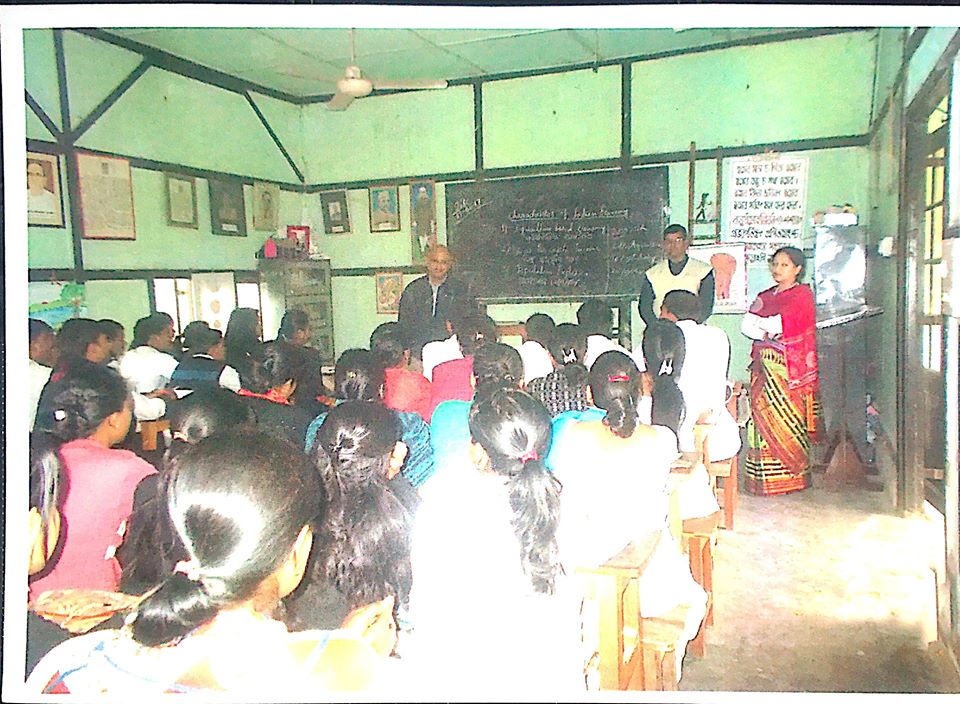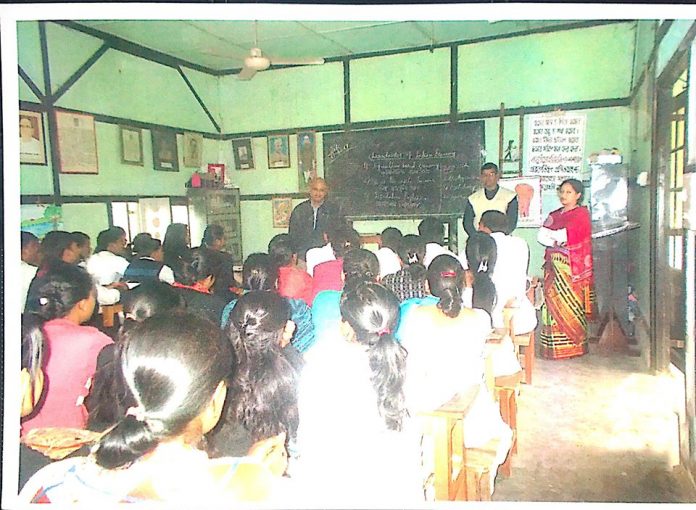By Ravindra Kumar Mishra for Twocircles.net
The reputation of government-run schools in Assam is generally dismal, and the same can be said about teacher education and management. Significant numbers of posts are vacant; the infrastructure leaves a lot to be desired, teacher educators do not care and lack abilities even as libraries remain empty.
Training teachers are all about the process of preparing teachers who in turn teach and involve pupils in a student-driven classroom. To make teachers the agents of change, teacher education institutions need to attract talented people, allow them to rise and come up with an alternative plan which is deliverable.

Besides a good number of private teacher education institutions in the State, there are 27 District Institution of Education and Training (DIETs), 17 Basic Training Centres and 7 normal schools that are supposed to offer Diploma in Elementary Education (D.El.Ed.)and prepare teachers for schools. State Council of Educational Research and Training (SCERT) came into being to streamline, integrate and coordinate academic and professional activities at the state level, has been declared as state academic authority and leadership academy of the state.
D.El.Ed. is the prerequisite qualification to appear at Teacher Eligibility Test. Those who qualify Teacher Eligibility Test (TET) may become teachers in schools. Only 20-25% of the candidates qualify TET in a given year since the beginning of this test. This raises a big question mark on the work of teacher education institutions. These institutions should offer an opportunity to student teachers to get self-confidence, explore and undergo robust and rigorous training that suits the demand of children in schools but results are disturbing.
SCERT at the apex level in the state plays the pivotal role of formulating academic policies, planning, carrying academic researchers in school and teacher education institution, development of textbooks for elementary and secondary schools and review of curriculum and syllabi for TEIs and schools in consultation and coordination with TEIs and other institutions, experts and educationists. SCERT is the vehicle to take the state education at height of name and fame and making a productive and progressive human resource for the state. This apex institution has almost 40% vacancy, old library looking for books and supply of magazines and journals, poor infrastructure lacking basic amenities, computers labs and peripherals along with deficient faculty.
The plight of Teacher Education Institutions of the state that fall under the ambit of SCERT is nevertheless similar to its state counterpart. 50% of the faculty positions are lying vacant out of 572 sanctioned positions in DIETs. Assam has a sizeable number of untrained teachers and to enable them to become a professionally qualified teacher is a gigantic challenge for the state government in the absence of human resource deficient teacher education institutions. Needless to mention that regular, robust and rigorous training full of “learning by doing” is the only way to prepare good teachers.
Any other alternative mode of training like open and distance learning mode will necessitate rigorous transaction and assessment mechanism to produce effective teachers who are more than certificate holders.
RTE lays emphasis on professionally qualified teachers and quality education that requires regular in-service training and capacity building of teachers. Ironically, in-service training of teachers is the mandate of Sarva Shiksha Abhiyan (SSA) Mission and Rashtriya Madhyamik Shiksha Abhiyan (RMSA) which is a society to implement SSA/RTE and RMSA. It has limited expertise on the textbook, curriculum, syllabus development etc. Convergence among these – SCERT, RMSA and SSA is a prerequisite for capacity building and development of teachers leading to enhance the quality of education.
It is an established fact that emphasis on Human Resources and infrastructure development is imperative as “better the infrastructure better the teaching-learning
process”. Transforming plans of quality education into reality needs investment in human resources; human resource planning and appointment/deployment free from any sort of influence.
Timely availability of fund, its optimum and wise utilisation can change the existing scenario. Denial of a fund to teacher education by the government in one way or the other impedes teacher development and management. Governments should think twice before denial as quality education revolves around the teacher. SCERT, SSA and RMSA must come forward with a long-term perspective plan, commitment and passion and address the state of affairs by collaborating with CSR, IDA and other grants for teacher development.
Inter and intra-departmental collaboration in SCERT, SSA, RMSA and Teacher Education Institutions at State, district and sub-district level are needed in designing and executing academic programmes including textbook/learning material development and training activities. It is important that the faculty involved in textbook/material development conduct or participate in the pre-service and in-service training programmes. A mechanism needs to be evolved to strengthen coordination and decision making amongst these departments, societies and institutions besides availability of fund.
Institutions of teacher education ought to be in a position to think clearly and freely about the challenges our schools face. They are certainly not perfect, but their ability to take an independent stance on education policies and practices is crucial. Humanistic, progressive, and experiential frames of reference in designing teacher education and curriculum necessitate closing the distance between theory and practice by co-creating programs, curriculum, experiences in teaching and teacher education. Strengthening teacher education management and development in the state must focus on the comprehensive planning of demand and supply and provisioning of resources.
The author is Former Chief Consultant with the Ministry of Human Resource and Development, Government of India.


